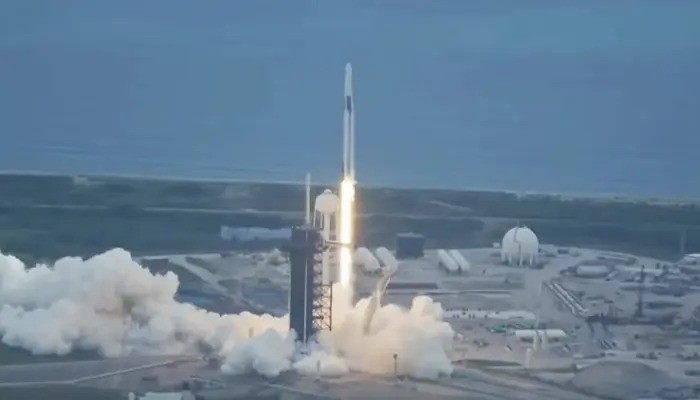Crew-11 Lifts Off: SpaceX Sets Reuse Record on Latest NASA Mission

SpaceX reached a new milestone in spaceflight on August 1 by launching Crew-11 to the International Space Station (ISS), setting a reuse record with its Crew Dragon spacecraft. The keyword “Crew Dragon” defines this mission’s significance, as the same capsule, Endeavour, soared into orbit for its sixth journey — more than any other in SpaceX’s human spaceflight program.
Smooth Liftoff After Delay
The launch took place at 11:43 a.m. EDT from Launch Complex 39A at NASA’s Kennedy Space Center in Florida. A day earlier, SpaceX scrubbed the initial attempt just moments before liftoff due to thick clouds. However, weather conditions cleared on Friday, allowing a successful launch aboard a Falcon 9 rocket.
The four-member crew — part of NASA’s eleventh operational flight under the Commercial Crew Program — is headed for a six-month stay aboard the ISS. This mission not only continues the partnership between NASA and SpaceX but also emphasizes the growing reliability of reused spacecraft and rockets in human spaceflight.
Powerful Return and Sonic Boom
Just under eight minutes after liftoff, the Falcon 9’s first-stage booster returned to Earth, landing safely at SpaceX’s Landing Zone 1 (LZ-1) at Cape Canaveral Space Force Station. The landing created a loud sonic boom heard across Florida’s Space Coast. This marked the final landing at LZ-1, which is being retired as part of a broader transition in launch site management.
Read: South Korea Sets Sights on Building Lunar Base by 2045
End of an Era for Landing Zone 1
LZ-1’s closure stems from a 2023 decision by the U.S. Space Force. The military announced that Launch Complex 13 — where LZ-1 is located — would be leased to private aerospace companies Phantom Space and Vaya Space. This strategic move opens the door for more commercial launches, shifting SpaceX’s recovery operations elsewhere.
Private companies like SpaceX may still apply for landing permissions at other facilities, though any such request will undergo strict evaluation. Despite LZ-1’s retirement, SpaceX maintains operations at Landing Zone 2, also located at Cape Canaveral, ensuring the continuity of its booster recovery missions.
Crew Dragon Endeavour’s Sixth Voyage
The Crew Dragon capsule used in this mission, named Endeavour, now holds the record for the most flights among all Crew Dragon vehicles. Previously, Endeavour flew missions including Demo-2, Crew-2, Ax-1, and Crew-6, showcasing the spacecraft’s durability and SpaceX’s advancements in spacecraft refurbishment.
With its sixth successful liftoff, Endeavour proves the long-term potential of reusable crew vehicles. Each mission saves cost and time while pushing the envelope of sustainable space travel.
NASA’s Commercial Crew Progress
Crew-11 exemplifies the maturing capabilities of NASA’s Commercial Crew Program. By collaborating with private companies like SpaceX, NASA has reduced launch costs and expanded crewed mission frequency. The success of Crew Dragon missions illustrates the viability of public-private partnerships in achieving long-term goals in space exploration.
Over the next six months, the Crew-11 astronauts will carry out scientific experiments, technology demonstrations, and routine maintenance aboard the ISS. Their work will support both current research and preparation for future missions, including long-duration flights to the Moon and Mars.
Looking Ahead
While the Crew-11 launch sets records, it also signals new beginnings. The retirement of LZ-1 shifts focus to developing new infrastructure for frequent and sustainable launches. SpaceX, now well-established in human spaceflight, continues to evolve — pushing the boundaries of what reusable technology can achieve in orbit and beyond.
Follow us on Instagram, YouTube, Facebook,, X and TikTok for latest updates
